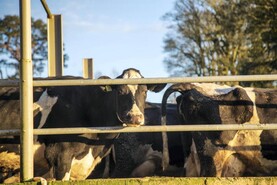At this stage farmers have submitted their third application for important Pillar I schemes, including the Basic Income Support for Sustainability (BISS), the Complementary Redistributive Income Support for Sustainability (CRISS) and the Eco Scheme.
The BISS application system was also the 2025 application route for the majority of area-based schemes, while a BISS application is an eligibility requirement of most other schemes.
For most elements of these Pillar I schemes it is a case of business as usual, with very little changing from the first two years of the current CAP Strategic Plan 2023-2027.
There are a few notable changes, such as the Area Monitoring System being used to monitor compliance with all area-based schemes in 2025. This is discussed in detail on pages 22 and 23.
BISS
The BISS elements surrounding the active farmer check remain unchanged. Applicants must be the holder of a registered herd number or have applied for a herd number on or before 15 May 2025.
With regards entitlements one eligible hectare of land declared must accompany each payment BISS entitlement. BISS entitlements continue to be subject to convergence and details of the value of these can be found via the BISS portal on agfood.ie or in previous correspondence issued stating entitlement values from 2023 to 2027.
CRISS
All active farmers are eligible for CRISS and payment will be made on the first 30 eligible hectares claimed. The only requirement outside of the criteria listed for BISS above is that applicants possess at least one BISS entitlement, or part thereof, to activate the payment.
Eco Scheme
Reports indicate the majority of farmers participating in the Eco Scheme continue to participate in agricultural practice 1 – space for nature, and select the enhanced option. Agricultural practice 2 (AP 2) – extensive livestock production is also a noteworthy selection.
Under AP2 applicants must have declared more than 50% of their 2025 BISS land area as eligible grassland to be eligible to apply for this agricultural practice in 2025.
There is a new requirement for AP 4 – planting of native trees and/or hedgerows. Receipts will be requested from all applicants who select this practice. Payment will not be made until receipts are uploaded to INet on Agfood.ie under the Eco-Scheme.
The deadline to upload receipts is 30 November 2025 at the very latest, but it is advised to upload these as soon as possible, as farmers who choose AP4 in 2025 will not receive their advance payment in late October 2025 unless the receipts for trees/hedges have been uploaded and approved by the Department.
Areas of Natural Constraint
The greatest reason why farmers miss out on payment under the Areas of Natural Constraint (ANC) is due to an inadequate stocking rate. The minimum stocking rate required is at least 0.1 LU per eligible forage hectare over the calendar year, along with maintaining a stocking rate of at least 0.1 LU per forage hectare for at least 28 consecutive weeks. The final 28 week consecutive period possible in 2025 for farmers who do not currently have enough stock starts on 18 June meaning farmers must satisfy the stocking rate requirement before this date.
What constitutes agricultural activity?
From 2023 onwards farmers have to satisfy that they meet the definition of an active farmer. This agricultural activity will be assessed on a holding basis and it will require applicants to demonstrate the means by which the agricultural activity is carried out on the holding. The Department highlights that the annual check is a safeguard “to ensure the person receiving scheme payments is the person farming the land being claimed”.
The main categorisations in determining active farmer status are outlined below for grassland and tillage farmers.
Grassland farmers
A farm’s stocking rate will be mainly used to define the active farmer status for grassland farmers. Farmers satisfying a minimum stocking level of 0.10LU/ha over the calendar year will be deemed active. A caveat to this is whereby a lower stocking rate may be justified on environmental grounds, similar to the current process under Areas of Natural Constraint.
Grassland farmers who maintain their lands by non-grazing means will be asked to indicate how land is maintained and be in a position to provide evidence to support this declaration.
Accepted activities include the making of hay or silage and topping/mulching. Documentation to prove agricultural activity may include the purchase of fertiliser /plastic wrap or contractor costs/money received for the crop.
Existing databases such as Animal Identification and Movements (AIM) and the annual sheep census will be the first port of call.
Further information may be required on specific parcels of lands such as commonage parcels, with questions raised where suitable stock are not present on the holding to graze the commonage, or where an applicant is claiming on land parcels which are located a long distance from the main farming hub.
Tillage lands
A percentage of farmers involved in tillage and/or permanent crops will be subject to administrative checks annually and may be required to provide evidence of activity. For tillage farmers this will likely include documentation such as receipts for seed, fertiliser, pesticides (if applicable), etc. The Department also outlines that a valid share-farming agreement will be deemed as a legitimate means of demonstrating activity.






 This is a subscriber-only article
This is a subscriber-only article

















SHARING OPTIONS: